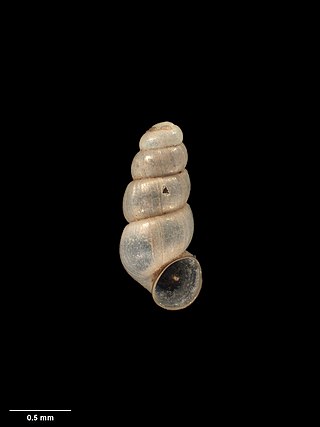
The conservation status of a group of organisms indicates whether the group still exists and how likely the group is to become extinct in the near future. Many factors are taken into account when assessing conservation status: not simply the number of individuals remaining, but the overall increase or decrease in the population over time, breeding success rates, and known threats. Various systems of conservation status are in use at international, multi-country, national and local levels, as well as for consumer use such as sustainable seafood advisory lists and certification. The two international systems are by the International Union for Conservation of Nature (IUCN) and The Convention on International Trade in Endangered Species of Wild Fauna and Flora (CITES).

The New Zealand rough skate, Zearaja nasuta, is a skate of the genus Zearaja, found around New Zealand at depths between 10 and 1,500 m. Its length is up to 1 m. This species has been assessed by the IUCN as of Least Concern. In June 2018 the New Zealand Department of Conservation classified the New Zealand rough skate as "Not Threatened" with the qualifier "Conservation Dependant" under the New Zealand Threat Classification System.

The lowland longjaw galaxias is a galaxiid of the genus Galaxias, found only in the South Island of New Zealand, in the Kauru River, a tributary of the Kakanui River in north Otago, and in parts of the upper Waitaki catchment. It grows to a length of up to 7 cm.
Chiltonia is a genus of amphipod crustaceans endemic to New Zealand. Four species are known, three of which live in fresh waters. They were first discovered by Charles Chilton in 1898 and the genus Chiltonia was erected the following year by T. R. R. Stebbing in Chilton's honour.

The sherwood dogfish or Sherwood's dogfish is a very rare sleeper shark of the family Somniosidae, found only around New Zealand. The only specimen studied was about 80 cm long.

Carmichaelia carmichaeliae is a species of plant in the family Fabaceae. It is found only in South Island of New Zealand. It is classified as having the "Nationally Critical" conservation status under the New Zealand Threat Classification System.

Olearia hectorii is a species of flowering plant in the daisy family Asteraceae. Its common names include deciduous tree daisy and Hector's tree daisy. It is endemic to New Zealand, where it is nationally endangered.
Beddomeia launcestonensis is a species of very small freshwater snail that has a gill and an operculum, an aquatic operculate gastropod mollusk in the family Hydrobiidae. This species is endemic to Australia.
The New Zealand Threat Classification System is used by the Department of Conservation to assess conservation priorities of species in New Zealand.

Cytora hirsutissima is a species of very small land snails with an operculum, terrestrial gastropod molluscs in the family Pupinidae.

Catapyrgus sororius is a critically endangered species of fresh water snail endemic to New Zealand.

Hadopyrgus ngataana is a tiny, transparent, and critically endangered freshwater snail, found only in a single stream in a cave in New Zealand.

Hadopyrgus rawhiti is a critically endangered species of freshwater snail native to New Zealand.
Opacuincola dulcinella is a critically endangered species of freshwater snail endemic to New Zealand.

Opacuincola eduardstraussi is a critically endangered species of fresh water snail native to New Zealand.
Potamopyrgus acus is a critically endangered species of fresh water snail native to New Zealand.
Potamopyrgus doci is a critically endangered species of fresh water snail native to New Zealand.
The northern spiny dogfish, also known as the brown dogfish, grey spiny dogfish or Griffin's dogfish, is a marine species of the family Squalidae, found off New Zealand's North Island. The length of the longest specimen measured is 89.9 cm (35.4 in).

Potamopyrgus oppidanus is a species of freshwater gastropod mollusk in the family Tateidae. It is endemic to New Zealand where it is found only in one area in the town belt of Wellington.












